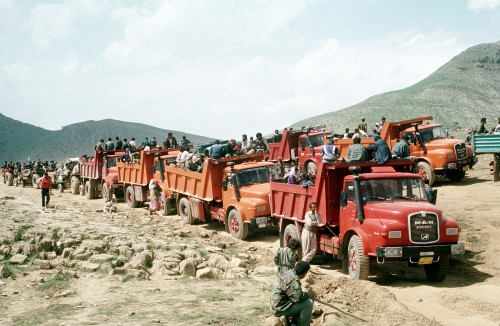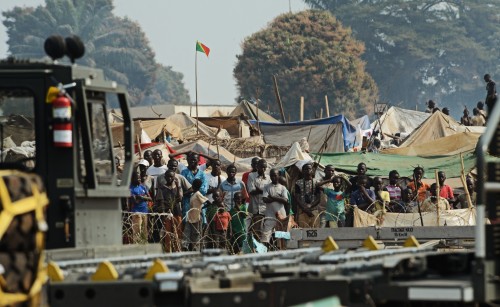This week begins by asking how the very actors of this unfolding drama perform their plays. It begins with an answer, precisely an artistic one. In a fascinating post, Jonas Tinius documents some of the practical and aesthetic experiences of asylum seekers and refugees over the course of the eight-month refugee theatre project RUHRORTER in the West German Ruhr area.
In this context, the series of performance-based interventions ‘15 Minutes’ gradually becomes both the metaphor that best evocates refugees’ ‘precarious temporality’ and an answer to this condition.
A response to a condition of displacement is also what drives Syrian refugees in Zaatari Camp in Jordan to produce homes and homelands in a humanitarian space. Geraldine Renaudiere aptly explores the long-term encampment process of Zaatari and its legal consequences. Refugees’ response to their state of homelessness brings to the fore the shortcomings and the weaknesses of an international protection system that is no longer prepared to address the lasting Syrian crisis.
Since the outbreak of the conflict in Syria, it is estimated that almost 4 million people have fled seeking refuge in the neighbouring countries: Lebanon, Iraq, Turkey and Jordan. The conflict had dramatic repercussions on the lives of about 600,000 Palestinian refugees. In two complementary and insightful articles, Kamel Dorai and Jalal Al Husseini show how the Syrian bloody civil war has largely reproduced and amplified the vulnerability of these chronically mobile and routinely displaced people respectively in Lebanon and Jordan.
Last but not least, we conclude this week with a thematic publication list on refugee and displacement, this time with a call for reviews (scheduled for Friday, 27th)!






